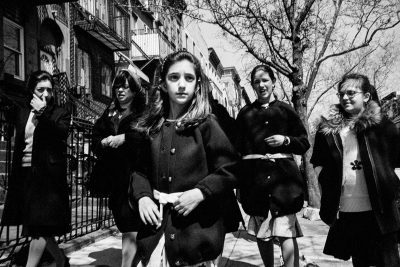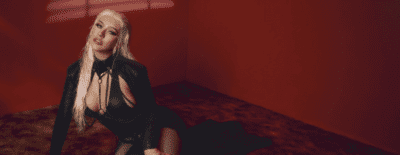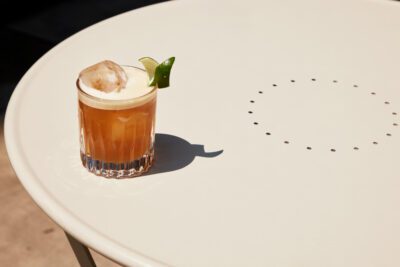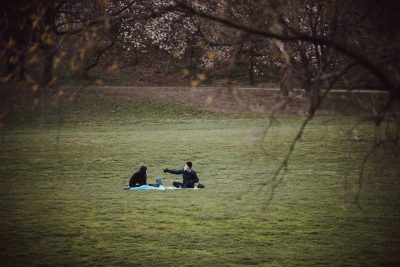Photo illustration by Johansen Peralta
The state of Prospect Park, from East Drive to the Vale and beyond
"There's a number of really critical existential questions we have to ask ourselves," park administrator Morgan Monaco says
Like what you’re hearing? Subscribe to us at iTunes, check us out on Spotify and hear us on Google, Amazon, Stitcher and TuneIn. This is our RSS feed. Tell a friend!
There is a lot going on in Prospect Park these days. The Vale of Cashmere is undergoing a massive, multimillion dollar redesign process. The two-mile section of the park’s loop known as East Drive is getting fresh asphalt and undergoing a trial redesign meant to make life easier — and safer — for both cyclists and pedestrians. The historic Lefferts House is getting a makeover that will pay proper homage to the native Lenape people who lived on the land before it was colonized, and the enslaved Africans who worked there after it was colonized. The park is getting a Shirley Chisholm memorial.
Overseeing all of that, and more, is Morgan Monaco. Since October, she has been the administrator of Prospect Park and the president of the non-profit Prospect Park Alliance, which operates the park in partnership with the city. It’s a role she took on after her predecessor Sue Donoghue was appointed commissioner of the city’s of parks by Mayor Eric Adams.
This week, however, Monaco’s role is as a guest on “Brooklyn Magazine: The Podcast.”
Monaco, who also happens to be the first Black president of the Prospect Park Alliance, has had about six months to settle into her role, which isn’t always a walk in the park. In addition to all of the above, the park made unfortunate headlines in August when a man attacked a golden retriever mix and his owner with a stick. The dog subsequently died. The story kicked up deeply embedded issues around class, race, policing, mental health and more — we’ll touch on that too. Oh, and in February a malnourished alligator was found in Prospect Park Lake.
This interview has been edited for concision and clarity. You can listen to it in its entirety in the player above or wherever you get your podcasts.
One little tidbit I learned about you that is really sweet and fun is that your husband actually proposed to you in Prospect Park.
Yes. We met when we were both working for the parks department many years ago now, while we were both working in the Arsenal and became friends. We got engaged on the steps of the Picnic House. After a long drive, we’d come back and I think we were visiting a friend in Boston and we kind of parked on Prospect Park West and my husband had the idea of let’s stretch our legs: “We’ve been sitting for so long, a stressful car ride, and let’s just go take a little walk.”
Were you like, “No, I just want to go home?”
Yes. I was actually kind of pissed off. [Laughs.] I was thinking, “I want to unpack the car and probably take a shower and decompress.” But he was insisting that we take this walk. So I said, “You know what? Fine. I often feel better when I come into the park.” So I went with him and he took me to the steps of the Picnic House, and we were looking over the veranda, the beautiful Long Meadow, and then he says, “Morgan, I’ve got something I want to tell you. I’ve been thinking about this for a long time,” and he drops down on one knee and I start to cry like in the movies. And he asked me to marry him, and I happily said yes.
So every time you’re at the Picnic House, one of the rare public restrooms in the park, [you think about how] that’s where you got engaged.
All sorts of business gets handled at the Picnic House. Yes. People commit their lives to each other and take care of business.
There’s a lot going on in the park right now. The most recent is that you’re in the midst of a pilot program to reconfigure the loop that would give pedestrians more room on either side of the streets. I know that this is not your design, but you’re administrating. What is the thinking behind this reconfiguration of the loop?
We actually worked with a transportation expert and consultant to develop a drive safety plan. We were able to get through participatory budgeting last year, through our local councilwoman, funding to do a safety study. We recently released those recommendations that’s currently up on our website. We encourage everybody to take a look about the findings and provide feedback. We have a survey, so we want to hear people’s response.
Simultaneously, the city, the Department of Transportation, reviewed the plan and wanted to pursue one of the recommendations, which is to try out a new configuration of the drive. And it just so happened that that was aligned with their regularly scheduled capital project to repave the East Drive. Because of that repaving, they decided to take this moment to actually re-stripe the drive as well.
As someone who bikes a lot in the city and through the park, walk me through how this is practically going to work. You’re laying down new stripes, meaning this little alleyway will be for pedestrians, this middle lane is for vehicles and bikes. How do you enforce that? As it is, there are lanes and people don’t stick to them. Some of the cyclists are out of control. Pedestrians can be clueless, too, and wander back and forth. Outside of a protective physical barrier, how does one ensure that people follow these lines?
The new plan that Department of Transportation is rolling out is that there’ll be a left lane for two-way pedestrian traffic, a middle lane that will be shared for bicycles and authorized vehicles like our park trucks, and then a new right hand, two-way pedestrian lane. So that off the bat is intended to help decrease any potential crashes where people are crossing from one side of the road to the other, making it more accessible for people to go in two directions means that they don’t necessarily have to cross. So that is part of the design and DOT’s rationale for putting this pilot together. Studies have shown that when there is actually a kind of shorter space for cyclists to share with pedestrians on either side, it does make people more aware of their surroundings and their speed and their attention to being as safe as possible.
I would imagine, in your position. any slightest tweak or alteration gets pushback on all sides. You’re going to get people that are supportive of it, people that are like, “How dare you?”
That’s what keeps New York interesting. There’s 9 million people and 9 million opinions. We sit in the center of all different types of users and we’re constantly thinking about how can we keep everybody safe while also allowing different and often conflicting uses simultaneously in the park.
The Vale of Cashmere section of the park is slated for a long needed-multimillion dollar renovation. I love how spooky and weird and derelict the Vale is, but I get that that’s not what you guys are going for. There are plans for a new building and an arbor with retaining walls and seating, reconfigured pathways. One bone of contention that I’ve read is that it’s going to divvy up the space. Some of the pushback at a recent hearing has been centered around whether it should be a more unified space or if they should be dividing it up the way they are.
The Vale is a really special and sacred part of the park. Many people don’t know about it, and then when they happen upon it, they’re kind of amazed. It really is a kind of magical and enchanting part of the park, and we very much appreciate and recognize that and see our new design as really enhancing that. There’s some areas that just haven’t had development in some time, and I think that this design really helps to honor the quiet contemplative nature of that area while also providing a really important amenity, which is bathrooms.
They’re going to build a pavilion there for the first time, which I think some people find potentially disruptive. Or in your case, it’s an asset to the area.
Yes. Well, the good news is we were fortunate to be able to conduct extensive community outreach about this. Before we even put pen to paper with the first design, we really went out to the public and had a number of listening and feedback sessions where we asked people, “How do you use this space? What are some enhancements or improvements that you would want to see?” There’s a need or demand for more public restrooms. So one element of the Vale redesign includes this pavilion with bathrooms, and there can be some light programming that we could consider. Nothing on the scale of what we have over on the west side and the bandshell, but meditation classes or yoga classes or bird watching and identifying pollinators are all the things that we have imagined.
What was the original intent of the Vale as you understand it when [Frederick Law] Olmsted designed it in the first place?
It’s actually had some different iterations. There’s a whole section in the children’s pool that’s was designed by McKim, Mead and White, and that has a kind of formal structure to it around the children’s pool and with the bricks, which I think people find really enchanting. It’s one of my favorite sections of the park. And then in the ‘60s during the Robert Moses era, these reflecting ponds were installed. The site itself has actually had a number of different changes or alterations since Olmsted’s original design. And we’re just continuing in that tradition of reflecting on how the space is currently used, what people have said they want from us in terms of the future design. And I’m really excited about what’s to come.
Speaking of the way the space has been used, there have been some unintended uses for that space over the years. Not that it’s the park’s job to provide a safe haven for cruising, but there is some historical significance to the LGBTQ community. How do you recognize the importance of that space to a community while also making it feel safe for everyone?
I’m so appreciative. We’ve had a number of conversations and feedback from members of the LGBTQ community about the history of that space and how important it’s to acknowledge that across the city and certainly here in Prospect Park and the Vale. And so we’re really looking forward to thinking about ways that we can acknowledge either through temporary art, traveling exhibitions that talk about that, or signage or programming. It’s really important that the park feel welcoming and accessible to everyone, especially those of the LGBTQ community.
Moving on elsewhere in the park. Probably the biggest headline to come out of the park in the last year was definitely an anomaly, but it reverberated. A man attacked a golden retriever mix and his owner with a stick. The dog died. It became a story that was both racially and socially charged. The man with the stick is Black, probably homeless, possibly mentally compromised in some way. The dog owner is white. The police has admitted to dropping the ball. The guy’s still out there somewhere. In an instance like that, what is the role of the Prospect Park Alliance? What should it be? What are its limitations?
Obviously this is a terrible tragedy. Our heart goes out to Jessica [Chrustic], who lost her dog. That is a major loss. It’s just a really unfortunate incident that happened. This particular incident touches on a number of different social issues that people have very strong opinions about. From the Alliance’s perspective, our role is to help make sure that we’re always talking about and have an emphasis on safety, while also contributing in what ways that we can to the larger conversation about homelessness and mental illness. I come from a background of health and human services, and that’s something that’s really important to me. There needs to continue to be conversations around funding for organizations that support people who have episodes and who can be well served with social services.
I can’t comment on the police’s ongoing investigation. Our role is to continuously think about ways that we’re keeping our park patrons safe and to offer what resources we can with our partners. So for example, we work with an organization called Breaking Ground, which helps to provide outreach services to unhoused individuals. Again, it’s important to advocate for additional funding resources citywide to address unmet needs for social services.
In other animal news, there was a malnourished alligator that was found in the lake in February, another anomaly. Last I heard, she’s been taken to the Bronx Zoo. Any updates there? How does an alligator end up in the lake? What else is in the lake that you’ve been surprised to find?
Yes. Well, that certainly was one of the most surprising aspects of my job thus far.
Did you get a phone call, like, “Uh, we found an alligator in the lake.”
Yeah, pretty much. I’m really proud and happy that the parks team and our urban park rangers and our [Parks Enforcement Patrol] officers were responding to protocol and came to the scene, helped to assess the condition of the alligator, were actually able to remove her from the lake. She was still very much alive, although unfortunately in really rough condition, very malnourished. We don’t know who actually placed her there, likely it was a home pet, probably kept in a bathtub who outgrew her surroundings.
She had swallowed a bathtub stopper.
Yes. It’s really unfortunate, and I think people have the best of intentions originally when they decide to house an exotic pet.
I don’t know about that.
But they’re wild animals and not necessarily suited at all for New York City living in apartments for a number of reasons, climate among them. So unfortunately, she was in really rough condition, and I’m so grateful that again, our team was able to respond and able to actually bring her to the Bronx Zoo where they have a reptile program. Last I’ve been in touch with them, they’ve relayed they’re trying to slowly get her strength back up so that they can actually prepare her for surgery to remove that bathtub stopper that she ingested. So the lesson here is, while we very much appreciate people connecting with nature, really, if you have a pet that you can’t care for, the park is not the best receptacle for that. That you can call animal care and that they’re the experts to help take care of pets that are not suitable for New York City living.
You don’t have surveillance cameras on the lake at all times or footage you can go back and review or anything like that?
No, we don’t have cameras widespread throughout the park. We have some at our facilities, but I think even so, people come in the evening in the dark hours and may be hard to identify people even if we did have a camera. The best way to prevent this from happening in the future is public education. Again, I can appreciate people are embarrassed or ashamed, but abandoning an animal at Prospect Park is really not the best for the animal’s welfare. Please call 311, reach out to animal care and control. That’s their specialty. That’s what they will do to help pick up an unwanted animal.
We have not surveyed our readers, so I’m not sure how many people have exotic animals in their bathtubs at home, but hopefully not very many.
Yes. And I think all of the attention and conversation about this hopefully encourages people to think twice about taking on an animal that they can’t care for.
I was looking at the capital projects tracker on the Prospect Park site. You’ve got a lot going on at various stages of design, procurement, construction. Let’s talk about the Lefferts House. There’ve been a lot of efforts over the past year or more to repurpose the mission of the house in the park because it’s so historically important and it hasn’t been maybe accurately or adequately portrayed in terms of its connection to Black history, to slavery, to slave labor.
This is actually one of the projects I’m most excited about. The historic house is a farmstead house, and we closed it in 2019 for much needed capital repairs to the roof. During that time, since it was closed to the public, we took that as an opportunity to really reevaluate our education program within the house. And it was really important to us to think about how we could actually shift the narrative from the perspective of the colonizer, from the Lefferts family to the indigenous people whose land was stolen and the enslaved Africans who farmed that land. We were very fortunate this past December to receive a very prestigious Mellon Foundation grant from their humanities in place program to actually reimagine Lefferts.
And so now in this year, we are engaging a museum consultant to help us develop a comprehensive plan for our education exhibits and re-imagining all of the objects that we currently have in the house, in the surrounding farmland in the children’s corner. Many people don’t know that there was slavery in Brooklyn or they had this misperception that it was sort of kinder or not as bad as in the south. We have a wonderful expert on staff, a historian who’s actually doing research. There’re not great records of slaves. They were treated as properties, so there’s not great records of people’s first and last names and their history and family trees. So we’re really creating that from whatever archival material we can get our hands on and helping to bring to life the legacies of people who lived in this area. I’m really proud, especially as the Alliance’s first Black woman to take over the helm, to be able to help, to be part of what I think is a national conversation about honoring the legacies of indigenous and Black people whose narratives have often been suppressed.
Or erased.
Exactly. And I think that there’s so much need for healing in a number of ways, especially after the pandemic. I’m honored that we get to play some role in helping to heal the wounds across this country from our corner of Brooklyn. And I think the impact there is that people who previously came to the park and kind of saw or knew about the legacy of the house, it didn’t speak to them. Now I think people will feel this is a place for me. This is honoring my people, and I think that goes a long way with healing.
I’m glad that you mentioned that you’re the first Black female president, Black president period. I wasn’t sure whether to bring it up or not. Is this relevant to this conversation? Does it carry a weight for you? Are you surprised that it took this long? That we’re still talking about firsts? What do you think about when you think about that line in your resume?
I’m honored. I’m grateful. There’s a lot more diversity that needs to take place within the open space realm. And having started my career as an 18-year-old intern, I’m grateful that now I sit at the helm of one of the most important parks in our city and that I had doors open for me where I was able to actually experience what a career in public service was like. And it was forever transformed by that internship. I remember being at the agency and leading the Million Trees campaign and being amongst the urban forest community and foresters, there were not a number of people of color in the room.
We did have a workforce development program that helped to reach young adults who are out of school and out of work and provide an entree ramp for them to get into landscape management or forestry. It was called the Million Trees Training Program. There needs to continue to be a conversation about workforce development and especially outreach into BIPOC communities to ensure that there can be entry into open space management and that there can be a career trajectory and path for leadership. So I’m the benefit of that.
One thing I was wondering about when I was looking at that capital projects tracker is that you’ve got all this stuff on your plate that you’ve either inherited or are managing. A lot of these things were already on the back or front or middle burners and now you’re going to shepherd them through. Or, it’s “This crisis happened that I have to respond to.” But what does being proactive look like? What are your immediate either long-term and short-term goals?
I’m really looking forward to working with a team on putting together a new strategic plan. It’s been some time since we’ve had one, and I think there’s a number of really critical existential questions we have to ask ourselves. Since our early days, we’ve had this division of responsibility between the Alliance and the parks department. The Alliance has traditionally been focused on all of the capital work and all of the design. So we have a uniform voice across the park with our design and our natural areas. We have dedicated team of eco zone gardeners who managed the 250 acres of natural areas in Brooklyn’s only remaining forest. But since the pandemic of course, we saw an incredible increase in usership. The park was really the only place people had to feel safe during the shutdown, and fortunately people found a greater connection, a relationship to the park.
Along with that comes an increase in the need for maintenance. So we’ve actually shifted some of our resources over into the direct maintenance and day-to-day trash pickup. We have a partnership with ACE, which is an organization that provides transitional employment for people coming out of being unhoused, and we provide supplemental maintenance crews who travel around the park and help to enhance the fixed posts and mobile crews that are provided by the Parks department.
We also created a mini capital projects unit or program called the Renew Initiative, and those are based on feedback we get from the public, quick fixes where we can bring in our contractors to repair roads. We’re doing the Nethermead right now — it’s been an eyesore — with a $500,000 contract. Make some improvements on some eyesores that would otherwise take a longer capital project or timeline to accomplish. I’m looking forward to, as part of the strategic plan process, helping to really crystallize now that we’ve by necessity and in a moment of crisis, experimented with taking on more, where can we build out our capacity to continue to sustain that?
The city allocates, what, 1 percent of its budgets to parks?
Less than that.
And Mayor Adams has been slashing budgets left and right. How impacted have you guys been by that?
Currently the parks department budget is about 0.5 percent. I proudly testified at the parks budget hearing and spread the word that we really want the administration to work in tandem with park support groups like ours to make sure that the city is resourcing its park system. Parks are such an essential part of our environmental health, our physical health, what it means to be a New Yorker. Prospect Park is a huge component of people’s experience in their community. So I know that there’s a number of competing priorities for this upcoming budget and that a lot of the decisions are based on revenue that come from different sources and federal Covid money that is receding, but it’s our business to make sure that the park is clean and safe for everyone to enjoy.
When you walk through the park, do you feel a sense of ownership? I would imagine it’s hard to walk through and see people littering or leaving their dog poop and not want to run in and intervene or shake your fist, “get off my lawn!” Does it feel like yours in a way or I know you’re a steward for the city, but you have a unique relationship.
Yes, I do have a unique relationship. Where we live in Windsor Terrace, we’re just a half a block away, so I’m in the park all the time. My son is in all of our various playgrounds. He’s learned to ride his scooter during the pandemic. It was a place I had to take him that was safe when I was too cooped up in our apartment. One of the most rewarding parts of my job thus far is actually getting to talk to New Yorkers who feel the same way and that it’s an incredible position to be in that I help to steward such an incredible amenity. We are Brooklyn’s flagship park and we have a lot of memories, birthday parties, barbecues, concerts, really significant moments in people’s lives that we get to be a part of. It’s an honor and a privilege to be the steward of happiness. That’s how I describe my job. I’m in the business of happiness.
That’s good on a business card. What is the most surprising thing you’ve learned about the park since working there? Is there like a little factoid or a little place in the park that surprised you or that not everyone knows about?
There’s so many. It’s so hard. When I get asked this question, it is a welcome reaffirmation of just how beloved the park is and how diverse our usership is. I guess I said earlier there’s a number of different ways that people use and access the park, and it’s been really rewarding to get to unpack and understand what brought people here, what’s their favorite section, what do they most use or frequent, and collecting those stories helps to really inform my perspective and how to lead and govern here. It’s just been the scale of love and appreciation and deep connection that New Yorkers have to the park.
That was a safe answer, but we’ll take it.
I mean, we talked about the alligator already. I feel like that probably biggest surprise I was not expecting in the job interview. No mention of an alligator was brought up.
Check out this episode of “Brooklyn Magazine: The Podcast” for more. Subscribe and listen wherever you get your podcasts.
You might also like 


























